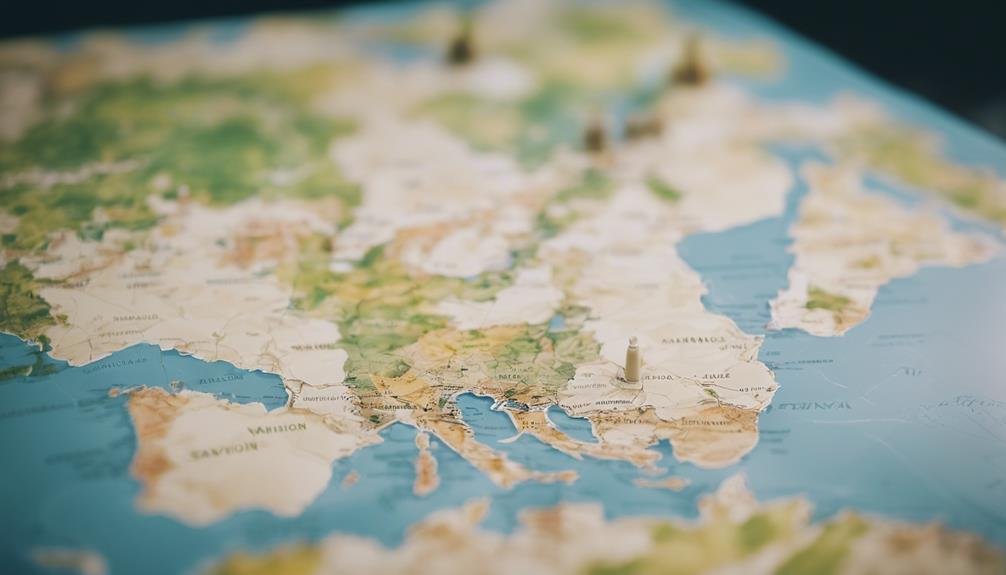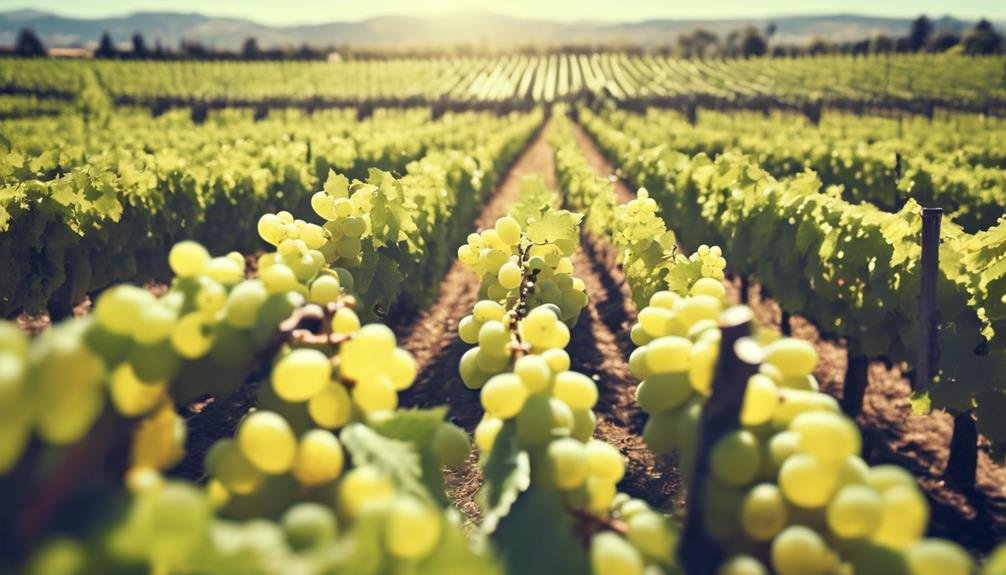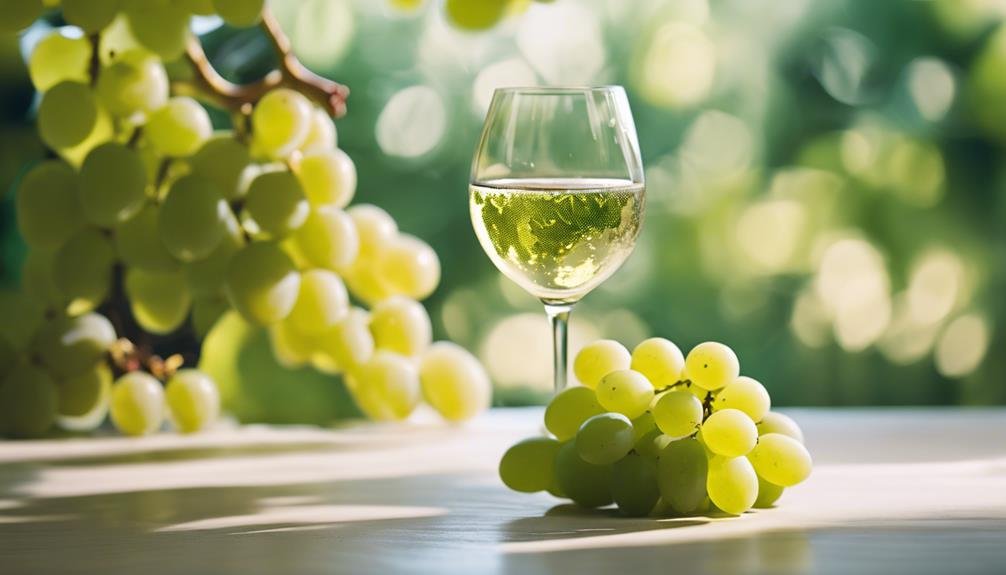Sauvignon Blanc, a grape celebrated for its versatility, boasts a spectrum of flavors worldwide. Its taste evolves with terroir and climate, yielding herbaceous and crisp notes in France, fruity profiles in New Zealand, and oaked complexity in California. This wine adapts well to varying climates, showing bright acidity and diverse aroma profiles. Pair it with goat cheese, seafood, or salads for a delightful experience. Producers are embracing sustainability and innovation, shaping a dynamic future for Sauvignon Blanc. The world of flavors within this grape invites exploration and discovery of unique regional expressions.
Global Diversity of Sauvignon Blanc
Sauvignon Blanc showcases a remarkable global diversity, with distinctive expressions cultivated in various regions across the world. Terroir influence and climate variations play a significant role in the flavor evolution and aging potential of this grape variety.
Different regions offer unique characteristics, from the herbaceous and crisp styles of France to the tropical and fruity profiles of New Zealand. The cool climates of South Africa result in a balance of acidity and fruitiness, while the oaked versions from California exhibit complexity with vanilla undertones.
Understanding these variations allows enthusiasts to explore a spectrum of flavors and styles, appreciating the nuances brought about by different growing conditions and winemaking techniques.
Production Techniques and Characteristics
In addition, Sauvignon Blanc reflects the influence of terroir, emphasizing the importance of where it is grown in shaping its distinctive characteristics.
Utilizing modern winemaking practices, the production techniques and characteristics of Sauvignon Blanc encompass a range of methods that influence its flavor profile and overall quality.
Sauvignon Blanc, a widely planted grape variety globally, thrives in cool climates and is an early ripening grape but is susceptible to frost damage. Harvesting methods include both hand harvesting and machine harvesting.
Unoaked versions of Sauvignon Blanc tend to be crisp and fresh, while oaked versions exhibit complexity with notes of vanilla. This grape can also be crafted into sparkling or dessert wines, showcasing its versatility.
Regional Flavor Profiles and Styles

When exploring Sauvignon Blanc's regional flavor profiles and styles, it becomes evident that the diversity across different wine-growing regions offers a rich tapestry of unique characteristics and expressions.
Terroir influence plays a significant role in shaping the flavors of Sauvignon Blanc, with each region imparting its own distinct twist. Aroma complexity varies from herbaceous and grassy notes in cooler climates to tropical fruit and citrus in warmer regions.
The acidic brightness of the wine can range from zesty and crisp to more rounded and mellow, depending on where it is produced. Some regions showcase more pronounced tropical notes, while others highlight mineral undertones, creating a fascinating array of styles for wine enthusiasts to explore.
Food Pairing Recommendations and Trends
An exploration of the evolving trends in food pairing strategies for Sauvignon Blanc reveals a dynamic landscape of culinary possibilities influenced by changing consumer preferences and sustainability practices in the wine industry.
Pairing suggestions for Sauvignon Blanc include matching it with goat cheese, seafood, salads, and tangy dishes, showcasing its versatility with various cuisines.
Industry insights point towards the increasing popularity of New Zealand Sauvignon Blanc, a rise in demand for organic and biodynamic options, and the growth of single vineyard and terroir-driven expressions. Additionally, there is experimentation with skin-contact and extended aging techniques, as well as an embrace of sustainability practices in vineyards.
These trends reflect a shift towards more conscious consumption and a desire for innovative flavor combinations.
Sustainability and Innovation in Sauvignon Blanc

The evolving trends in food pairing strategies for Sauvignon Blanc reflect a broader movement towards sustainability and innovation in the production and cultivation of this renowned grape variety.
Sustainable practices are becoming increasingly important in vineyards cultivating Sauvignon Blanc, with many producers adopting organic and biodynamic methods to minimize environmental impact.
Innovation in winemaking techniques, such as extended aging on lees or in oak barrels, is creating unique flavor profiles and enhancing the complexity of Sauvignon Blanc wines.
These practices not only contribute to the quality and diversity of Sauvignon Blanc offerings but also demonstrate a commitment to long-term environmental stewardship in the wine industry.
As consumer interest in sustainable and innovative wines grows, producers are responding with forward-thinking approaches to Sauvignon Blanc production.
Frequently Asked Questions
Can Sauvignon Blanc Grapes Be Used to Make Sweet Dessert Wines?
Sauvignon Blanc grapes can be utilized to craft luscious sweet varietals, including dessert wines. Through late harvesting or noble rot, the grapes achieve high sugar levels, resulting in rich, honeyed flavors balanced by the grape's natural acidity.
How Does the Altitude at Which Sauvignon Blanc Is Grown Affect Its Flavor?
High altitude flavors in Sauvignon Blanc are tantalizingly elevated by the unique climate influence. The grapes, nurtured in lofty terrains, develop intensified zesty and vibrant characteristics, creating a sensory experience that transcends ordinary expectations.
Are There Any Famous Sauvignon Blanc Vineyards or Estates Known for Exceptional Quality?
Some of the top-rated vineyards and famous estates globally renowned for exceptional quality Sauvignon Blanc include Cloudy Bay in New Zealand, Domaine de Chevalier in Bordeaux, and Screaming Eagle in California. These estates consistently produce outstanding Sauvignon Blanc wines.
What Are Some Unique and Unconventional Food Pairings That Go Well With Sauvignon Blanc?
Unusual pairings can elevate Sauvignon Blanc experiences. Try sushi with wasabi, guacamole with jalapeños, or mango salsa. Flavor experiments like spicy Thai dishes or tangy ceviche create surprising harmony, showcasing the wine's versatility.
How Do Different Fermentation Techniques Impact the Final Taste of Sauvignon Blanc Wines?
Different fermentation techniques greatly influence Sauvignon Blanc taste. Barrel aging enhances fruitiness and adds complexity with oak notes. Stainless steel fermentation preserves acidity, creating a crisp and fresh profile with bold herbaceous aromas. Each method offers distinct characteristics to the wine.
Conclusion
To sum up, Sauvignon Blanc serves as a testament to the diverse expressions of terroir and winemaking techniques around the world. Its global popularity continues to grow, offering wine enthusiasts a wide range of flavors and styles to explore.
With its herbaceous and fruity notes, Sauvignon Blanc captures the essence of each region it hails from, making it a truly exceptional and versatile wine choice for any occasion.
